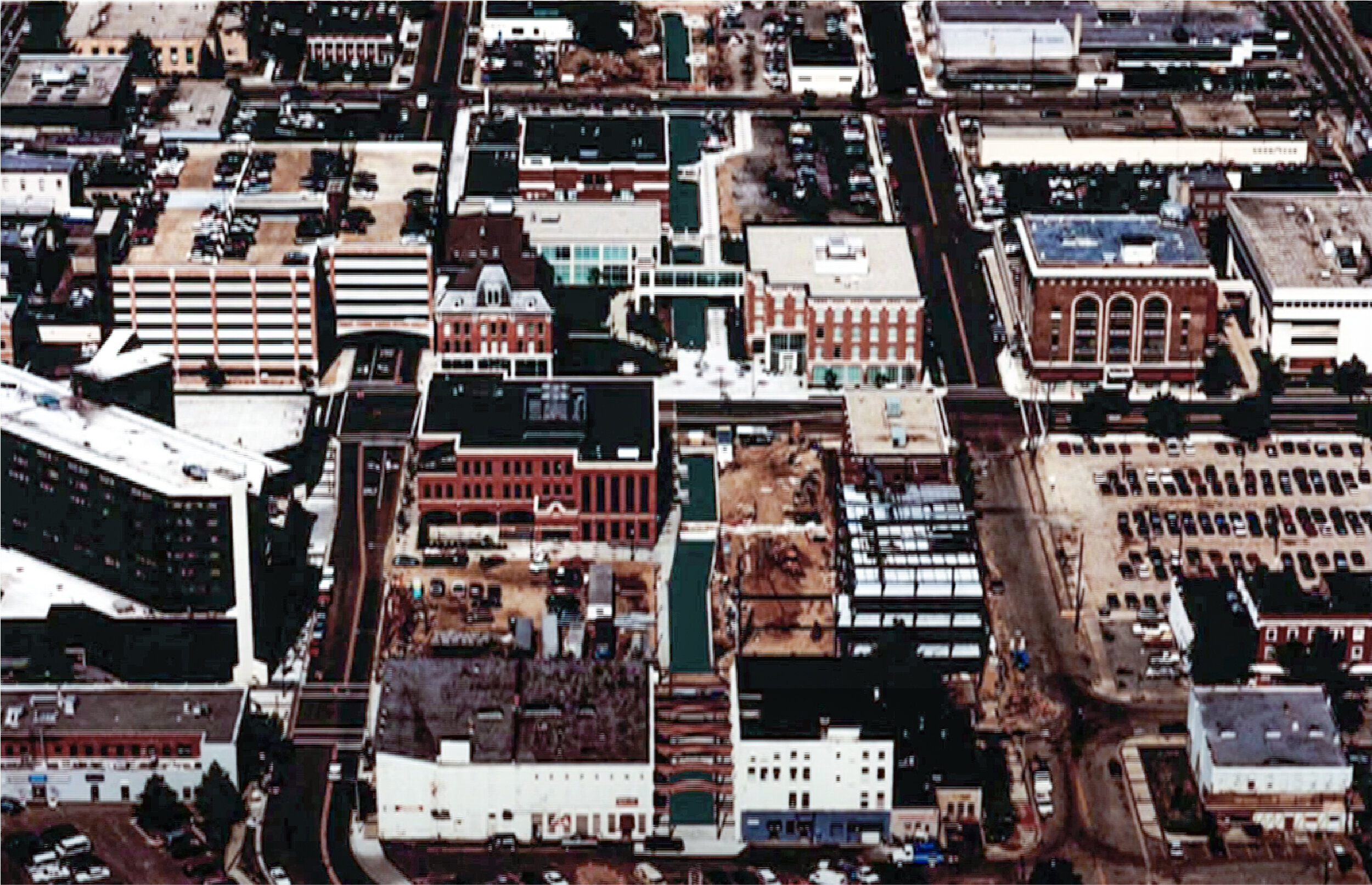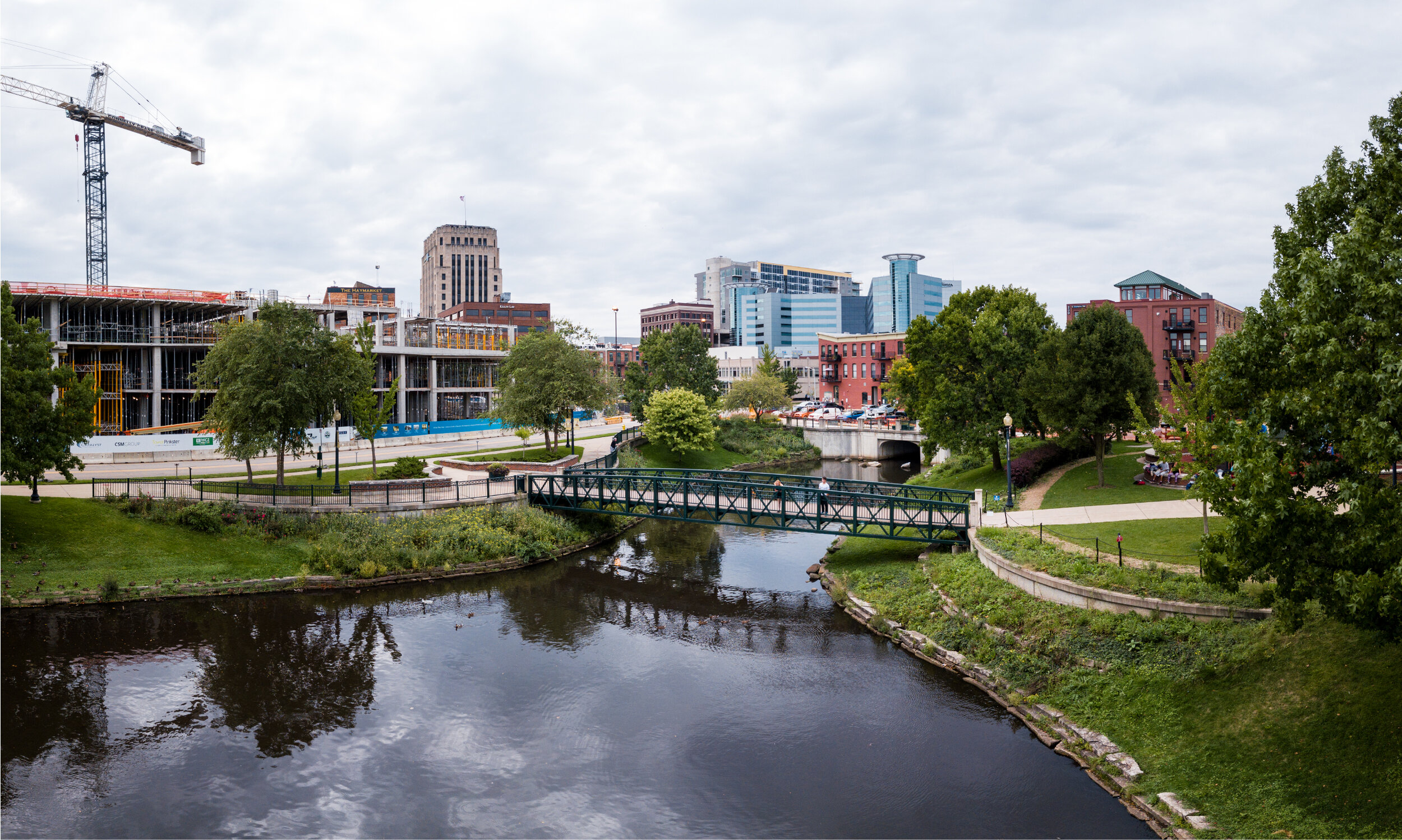Arcadia Creek
Location: Kalamazoo, MI
Length: 1,550 feet
Cost: $7.5M
Year: 1995
In 1995, Arcadia Creek was uncovered through downtown Kalamazoo, MI, replacing aging and inadequate flood control infrastructure. It spurred major redevelopment in the area, including $200 million in private development, and generates $12 million annually from large regional festivals.
For more than a century, Arcadia Creek flowed underneath downtown Kalamazoo, MI. Flooding occurred often. The culvert containing the creek was undersized. Stormwater regularly exceeded the capacity of the pipe, inundating the deteriorating business district [01].
In the late 1980s, planning began to attract business to the declining downtown. Flooding was an important issue to address in redevelopment. Daylighting Arcadia Creek surfaced during a national design competition. Residents felt the idea would be too costly. However, studies revealed an open channel proved cheaper than excavating, enlarging, and reburying the existing culvert [02].
A children’s book, The Story of Arcadia Creek, was published to educate youth and their parents about the project. Copies were handed out for free to schools, along with an education curriculum. A Free the Creek Week gathered further ideas and feedback [03].
As part of the $18-million redevelopment project, five large blocks of Arcadia Creek were uncovered—three blocks of concrete-lined channel and two of open, grassy pond. Due to the urbanized landscape, space did not exist for a naturalized channel. A series of weirs and swales slow down water velocity. The slowed creek drops sediment, which can be easily scooped out to improve water quality.
The stream terminates at a pond. The gentle, grassy slopes provide an area for people to gather; known as the Arcadia Creek Festival Place. An amphitheater, overlooking the creek, hosts five regional summer events for City residents and tourists.
The channel protects against the 500-year flood [02]. Floodplain maps were redrawn post-project, and businesses no longer pay for flood insurance. This boosted the area’s appeal for private investment.
To fund the revitalization, bonds were issued based on tax-increment financing. Five existing businesses--a bank, community college, museum, and two hospitals--were recruited to invest in the area. The Downtown Development Authority offered enticing low-interest leases to the developers. Businesses responded with $4.5 million to purchase land around the creek. The $18-million public investment leveraged a total of $200 million in private development. Property tax revenues in the area have increased annually from $60,000 to $400,000 to pay back the bonds. The Arcadia Creek Festival Place generates an estimated $12 million a year [02].
Goals
Attract new business to the area and thereby revitalize it economically and socially; and
Address the area’s increasing flooding problems resulting from an increase in impervious surface areas in the surrounding community.
Sources
Trice, Daylighting Streams (2016).
Pinkham, Daylighting: New Life for Buried Streams (2000).
Kalamazoo Public Library, Arcadia Creek Project (2013).






